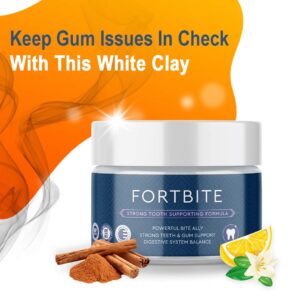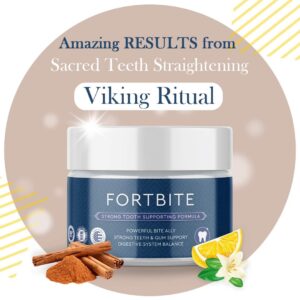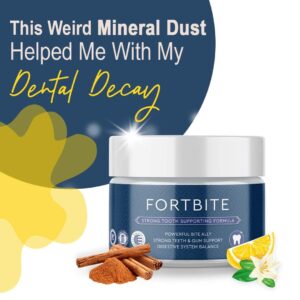Utilize these wonderful DIY methods to clean plaque and tartar from your teeth. Make sure your mouth and teeth are healthy by using all-natural cleansers and cleaning agents.
What Are Tartar and Plaque?
Plaque and tartar are frequently used interchangeably. Despite their striking similarities, they are not the same thing. The bacteria that cause decay and cavities are called plaque. Additionally, the tartar that forms on your teeth is a buildup of food, saliva, stains, dirt, and filth. Plaque can adhere to teeth more readily when there is tartar on them.
Tartar is visible as white or yellow areas on your teeth. It clings to your enamel quickly and is fairly durable. A dentist should take it out because of this. Tartar accumulations can cause foul breath and general tooth discoloration if left untreated.
Fortunately, you may avoid this tartar accumulation by routinely brushing your teeth to remove plaque. Even better, you can do that without a dentist. Plaque on your teeth is simple to eliminate at home. Check out these fantastic DIY methods for removing plaque.
Plaque and Tartar Removal at Home Home remedies should never take the place of professional dental care. However, some techniques work well to get rid of plaque.

- Brush thoroughly and frequently. To get rid of plaque, wash your teeth thoroughly and frequently. It’s a fantastic technique to maintain good oral hygiene and avoid tartar accumulation.
- Every meal should be followed with a dental cleaning. It’s better to wait 30 minutes after eating before exercising. It takes three minutes to wash your teeth. Make sure to brush each tooth with the same amount of pressure on the toothbrush.
- Use toothpaste with fluoride. There’s a solid reason fluoride is virtually usually included in commercial toothpaste formulas. By fortifying tooth enamel, this chemical lowers the possibility of tooth decay from acidic meals and beverages. In fact, it promotes the healing and regeneration of decaying teeth. The main issue is that this process moves too slowly for cavities to be prevented by brushing alone. Additionally, you must maintain a nutritious diet and abstain from sugary snacks.
- Use baking soda to remove plaque. Plaque can be easily removed at home by using baking soda on occasion. It has a little abrasiveness. As a result, it scrapes and files unpleasant material from the enamel’s surface.
Take one tablespoon of baking soda and a dash of salt, that’s all that’s required. Next, dunk a toothbrush in the liquid after dampening it. After that, brush your teeth as usual and make sure to rinse well.

- Combine glycerin and aloe vera.
There are several advantages to aloe vera. But did you know that it can also prevent plaque buildup on your teeth?
A teaspoon of aloe vera gel, half a cup of baking soda, and a cup of water are combined. Add four teaspoons of vegetable glycerine and a generous amount of lemon essential oil after that. Now brush your teeth with the mixture, and in the morning, you’ll have a gleaming set of gnashers.
- Use an orange peel to brush your teeth
You could prefer something a little more straightforward if you don’t feel like applying vegetable glycerine to your teeth. Orange peel can be applied directly to the teeth. This will aid in the fight against enamel-eroding bacteria that cause tartar.
The peel can also be broken up and applied to the stained areas. Rinse after allowing to rest. The teeth will visibly become whiter as a result.
- Consume a variety of fruits and vegetables.
Fruits and vegetables are beneficial for more than just your teeth. It is also necessary for your entire body. Additionally, eating fruits and vegetables might help you naturally remove plaque.
Eat some apples, celery sticks, carrots, and peppers to quickly improve the strength and health of your teeth.
- Eat some sesame seeds. A useful dental cleaner is sesame seeds. Plaque and tartar are gently removed without causing tooth damage.
Simply put a few sesame seeds in your mouth. Do not swallow them; instead, chew them up. While the seeds are still in your mouth, wash your teeth with a dry toothbrush. They will work as a scrub, gently scrubbing the surface of discolored teeth.
- Indulge in Lots of Figs. Surprisingly, there are a lot of natural ways to get rid of plaque that involves fruit. Did you know that figs are excellent in battling germs and other dental irritants?
All you have to do is consume three or four figs at once. Chew them carefully and gently. Allow them to see the teeth and gums as much as you can.
The salivary glands will get going as a result of chewing. The inherent antibacterial qualities of saliva make this a wonderful method for removing plaque.
- Replace Your Manual Toothbrush With an Electric One The Century’s greatest dental controversy. In the end, neither is better or worse; you must make your own decision.
Try switching to an electric toothbrush if, however, you are prone to plaque and tartar formation when using manual brushes. How well it eliminates tartar and plaque may surprise you.
- Consistently Use Floss
Regardless of how carefully you brush your teeth, flossing is still necessary. Both are necessary for a high-quality dental care routine, according to dentistry industry norms. Even though brushing is excellent at reaching the tooth enamel’s surface, a lot of dirt and debris collect in the corners. Simply put, a conventional brush cannot get here. - Use an antibacterial cleaner to rinse.
A mouthwash or cleanser containing hydrogen peroxide can also be used to prevent the accumulation of tartar and plaque. It is rather simple to put together a batch of this kind of product on your own if you can’t locate it in your neighborhood drugstore.
Add three teaspoons of hydrogen peroxide solution (3% only) to one tablespoon of antiseptic mouthwash. To avoid harming your teeth, make sure the item you use has the right concentration.
- Purchase a dental scraping tool.
In essence, a dental scraper (or pick) is the same type of tool that your dentist employs to coax the tartar from your teeth during a thorough cleaning. These are available in drug stores and pharmacies.
They have a hooked metal end and are long and slender. Although a dental scraper may seem intimidating, scraping shouldn’t ever be uncomfortable. Choose one, stand in a well-lit space with a mirror, and carefully scrape at the white tartar areas.
But proceed with caution! You’re using a sharp item to scrape inside your mouth. Prevent getting hurt, and avoid removing your teeth’s enamel off your teeth. In the end, you might do more harm than good.
- Construct a Super Vitamin Paste
Fruits with a lot of vitamin C are excellent for eliminating plaque at home. Oranges, tomatoes, and strawberries are blended into a thick paste. Use it to treat tartar and plaque accumulations. After five minutes of resting, properly rinse. Vitamin C will assist in keeping your mouth clean and removing bacteria. - Indulge in Spicy Foods
You’re in luck if you like Mexican or Indian food. Spicy foods are excellent for lowering plaque and tartar levels in the mouth, claim dental specialists. They accomplish this by raising your salivary flow (which is great against plaque). Saliva cleans teeth by washing away harmful substances. - Use a vinegar solution to gargle
Plaque removal using this method at home isn’t the most enjoyable, but it works well. Additionally, it is natural and promises not to damage teeth.
Take a mixture made of four ounces of water, two tablespoons of vinegar, and one tablespoon of salt. Use this vinegar solution to gargle now. Repeat every two to three days for optimal effectiveness.
- Crush some clove In fact, the spice clove has long been used to treat toothaches. For generations, people have used it to treat oral discomfort. It is now available in every supermarket. You should have no trouble finding ground cloves at the shop because it is a fairly popular component in Indian cooking.
To make a paste, combine the ground spice with a little water. Directly apply this paste to the soiled areas, then give it time to dry. Thoroughly rinse.
- Specify the Most Prominent Stains
You can check to see whether you have plaque accumulation on your teeth in a fairly simple and innovative way. Add a teaspoon of water to some food coloring—just the standard kind you can buy at the store.
This little concoction can be used as a highlighter for plaques. To prevent stains, you should first apply some petroleum jelly to your lips. After briefly gargling with the food coloring, spit it out. Your teeth should have a few light-colored areas. The most difficult-to-remove plaque buildups are there. Use focused brushing to get rid of it.
- Enjoy Some Cheesy Food
Aged cheeses, like Swiss or cheddar, are an excellent natural way to brush your teeth between meals. They balance the acids that build up immediately after meals. The majority of plaque buildup is caused by these acids.
Scientists claim that there is a substance in aged cheese that functions as a plaque barrier and buffer. Peanuts and sesame seeds both contain the same ingredient.

5 Ways to Avoid Plaque
Plaque is a very simple condition to treat at home, but it can spread quickly. Additionally, plaque will harden into tartar if it is left on your teeth. Another option is to avoid the formation of plaque in the first place.
Follow these five recommendations to completely prevent plaque buildup. When it comes to dental health, prevention is always more affordable than treatment. Your chances of maintaining the health of all of your teeth will be significantly improved if you can prevent plaque and tartar from forming in the first place.
- Attend dental appointments on time
It’s your responsibility to remember appointments and checkups. You cannot be forced to go by your dentist. But you must go frequently. You run the danger of having your name removed from the practice’s waiting list if you skip multiple dates in a row. - Constantly employ a soft-bristled brush
Watch how vigorously you’re scrubbing your teeth. Brushing your teeth vigorously won’t make them cleaner or more quickly. Quite the opposite. Enamel is damaged by vigorous brushing, which causes a variety of additional issues. Use a soft-bristled brush and exercise reasonable caution. - Reduce your smoking intake
Sadly, there is no trick or hidden way to get around this one. Smoking actually has a negative impact on your oral health. If you smoke, your chance of developing gum disease and tooth infections will always be significantly increased. Additionally, it will cause an increased buildup of tartar at the gum line. - Consume A Lot Of Water
Few things are as healthful and natural as water. In any case, you ought to consume eight glasses of it daily. (This advice should therefore merely serve as a reminder.) Drinking lots of water will help wash away plaque, dirt, and other particles before they have a chance to adhere to the surface of your tooth enamel. - Speak with Your Dental Expert
You should consult your dentist if you have any queries or worries regarding the condition of your teeth. They are the best-qualified party to respond or offer a remedy.
Remember, your journey to optimal oral health is a collaborative effort with your dentist. They are not there to chastise or reprimand you, but rather, they are committed to offering personalized care that addresses your unique dental concerns. With open communication and trust, you can transform any oral health issue into an opportunity for improvement. So approach your dental visits with confidence, knowing that together, you and your dentist can achieve the best possible outcomes for your oral health.
